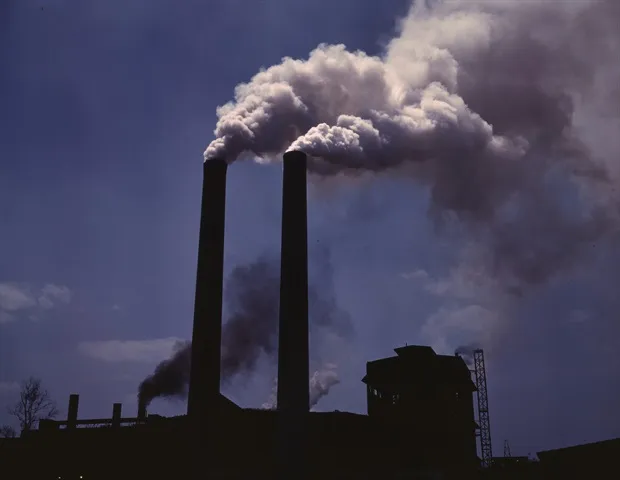- Study Reveals Health Impacts of Returning to Smoke-Damaged Homes
In the wake of natural disasters like wildfires and house fires, many people are left with the difficult decision of whether to return to their homes that have been severely affected by smoke and soot. A recent study has shed light on the health risks of returning to smoke-damaged homes, revealing that prolonged exposure to lingering smoke particles and toxins can lead to a range of serious health complications. The study provides new insights into the dangers of smoke inhalation and the long-term effects of exposure to contaminated indoor environments.
This article explores the findings of this groundbreaking research, outlining the health risks of living in smoke-damaged homes, the mechanisms by which smoke particles affect the human body, and the preventive measures that individuals can take to protect their health. With the increasing frequency of wildfires and other fire-related disasters globally, understanding the health impacts of smoke exposure and how to safeguard oneself is more crucial than ever before.
The Growing Threat of Smoke-Damaged Homes
In recent years, the frequency and intensity of wildfires have increased, leading to devastating destruction and loss of life. According to the National Interagency Fire Center (NIFC), the United States alone has seen an alarming rise in the number of wildfires and the amount of land burned. Similarly, wildfires in other parts of the world, including Australia, Canada, and the European Union, have caused extensive damage, leaving behind homes and communities that are heavily contaminated by smoke.
While the immediate dangers of fire-related disasters are evident, the long-term health impacts of returning to smoke-damaged homes are only now beginning to be fully understood. Many individuals who are forced to leave their homes after a fire often face the difficult decision of whether to return once the fire has been extinguished. However, even after the visible signs of smoke and soot have been cleared, the air and surfaces in the home may still contain harmful chemicals and particulate matter that pose serious health risks.
The study highlights the fact that many individuals are unaware of the lingering dangers of smoke exposure and are often too eager to return to their homes due to emotional attachment or financial constraints. The research shows that smoke-damaged homes can continue to harbor hazardous substances long after the fire has been extinguished, and exposure to these substances can lead to a range of respiratory, cardiovascular, and other health issues.
The Composition of Smoke and Its Health Impacts
Smoke produced by fires contains a complex mixture of chemicals, particulate matter, and gases, many of which are highly toxic. The composition of smoke varies depending on the materials that are burned, but it often includes substances such as carbon monoxide, volatile organic compounds (VOCs), benzene, formaldehyde, and particulate matter (PM). These harmful substances can enter the body through the respiratory system and have detrimental effects on various organs and tissues.
- Particulate Matter (PM): One of the primary components of smoke, particulate matter is a complex mixture of tiny particles that can penetrate deep into the lungs and even enter the bloodstream. Prolonged exposure to PM is associated with an increased risk of respiratory diseases such as asthma, chronic bronchitis, and emphysema, as well as cardiovascular diseases. Studies have shown that even low-level exposure to particulate matter can increase the risk of lung cancer and other serious health conditions.
- Carbon Monoxide (CO): Carbon monoxide is a colorless, odorless gas that is produced during the incomplete combustion of materials. When inhaled, carbon monoxide can interfere with the body’s ability to transport oxygen, leading to symptoms such as dizziness, headaches, shortness of breath, and confusion. Prolonged exposure to high levels of carbon monoxide can result in severe health complications, including heart attack, stroke, and organ damage.
- Volatile Organic Compounds (VOCs): VOCs are a group of chemicals that easily evaporate into the air and contribute to air pollution. Many of these compounds are found in smoke and can irritate the eyes, nose, and throat, leading to symptoms such as coughing, wheezing, and difficulty breathing. Some VOCs, such as benzene and formaldehyde, are also known carcinogens and can increase the risk of developing cancer with long-term exposure.
- Benzene and Formaldehyde: These toxic substances are commonly found in smoke, particularly when materials like plastics, rubber, and synthetic fabrics are burned. Benzene is a known carcinogen that can increase the risk of leukemia, while formaldehyde is associated with respiratory issues and cancer. Prolonged exposure to these chemicals can lead to severe health problems, particularly in individuals with compromised immune systems.
- Polycyclic Aromatic Hydrocarbons (PAHs): PAHs are a group of chemicals that are produced during the incomplete combustion of organic materials. These substances are highly toxic and have been linked to various cancers, including lung and skin cancer. PAHs can accumulate in the body over time, increasing the risk of chronic health conditions.
The Health Risks of Returning to Smoke-Damaged Homes
The study on the health impacts of returning to smoke-damaged homes found that individuals who returned to these homes after a fire faced a significantly higher risk of developing both short-term and long-term health problems. The researchers noted that the risks were particularly pronounced in vulnerable populations, such as children, the elderly, and individuals with preexisting respiratory or cardiovascular conditions.
- Respiratory Issues: The most immediate health concern for individuals returning to smoke-damaged homes is the exacerbation of respiratory problems. The lingering presence of particulate matter and harmful chemicals in the air can trigger asthma attacks, worsen chronic respiratory conditions, and lead to new respiratory issues. The study found that individuals who were exposed to smoke-damaged environments had a higher incidence of coughing, wheezing, shortness of breath, and chest tightness. In some cases, prolonged exposure to smoke-tainted indoor air led to the development of chronic bronchitis and even emphysema.
- Cardiovascular Problems: Exposure to smoke particles and toxins is also linked to an increased risk of cardiovascular diseases. The study revealed that individuals who returned to smoke-damaged homes were more likely to experience high blood pressure, heart palpitations, and increased risk of heart attacks and strokes. This is due to the fact that the toxic chemicals in smoke can damage blood vessels, increase inflammation, and disrupt normal cardiovascular function.
- Cancer Risk: The chemicals found in smoke, such as benzene, formaldehyde, and PAHs, are known carcinogens. Long-term exposure to these substances increases the risk of developing various types of cancer, including lung, throat, and skin cancer. The study found that individuals who spent extended periods of time in smoke-damaged homes had a significantly higher incidence of respiratory cancers, particularly in individuals who had previously smoked or had other risk factors.
- Mental Health and Cognitive Impacts: In addition to the physical health risks, the study also highlighted the psychological and cognitive impacts of returning to smoke-damaged homes. The stress of dealing with the aftermath of a fire, combined with the ongoing exposure to toxic substances, can lead to increased anxiety, depression, and difficulty concentrating. Prolonged exposure to smoke and other environmental stressors can also impair cognitive function, particularly in children and the elderly.
Preventive Measures and Solutions
The findings of the study underscore the importance of taking preventive measures to protect health when returning to smoke-damaged homes. The researchers recommend that individuals who have been affected by fire damage take the following steps:
- Professional Cleaning and Air Purification: It is crucial to have a professional cleaning service assess and clean the home to remove soot, smoke residue, and harmful chemicals. Air purifiers with HEPA filters can help reduce the levels of particulate matter in the air and improve indoor air quality.
- Ventilation: Proper ventilation is essential for removing lingering smoke particles and gases from the home. Opening windows, using exhaust fans, and using air filtration systems can help circulate clean air and reduce indoor air pollution.
- Protective Gear: Individuals who must return to a smoke-damaged home should wear protective gear, such as masks, gloves, and goggles, to reduce exposure to harmful substances. This is especially important for individuals with preexisting respiratory conditions, children, and the elderly.
- Health Monitoring: People who have been exposed to smoke-damaged environments should monitor their health closely and seek medical attention if they experience symptoms such as difficulty breathing, chest pain, or persistent coughs. Regular check-ups with a healthcare provider are recommended to detect any long-term health effects early on.
The study on the health impacts of returning to smoke-damaged homes provides critical insights into the risks of exposure to lingering smoke particles and chemicals. While the immediate dangers of fire-related disasters are well understood, the long-term health consequences of living in a smoke-tainted environment have been less acknowledged. This research emphasizes the need for proper cleaning, ventilation, and protective measures to mitigate the risks of returning to smoke-damaged homes. It also highlights the importance of raising awareness about these health risks, particularly as the frequency of wildfires and other fire-related disasters continues to increase worldwide. By taking the necessary precautions, individuals can better protect their health and reduce the potential long-term effects of smoke exposure.









